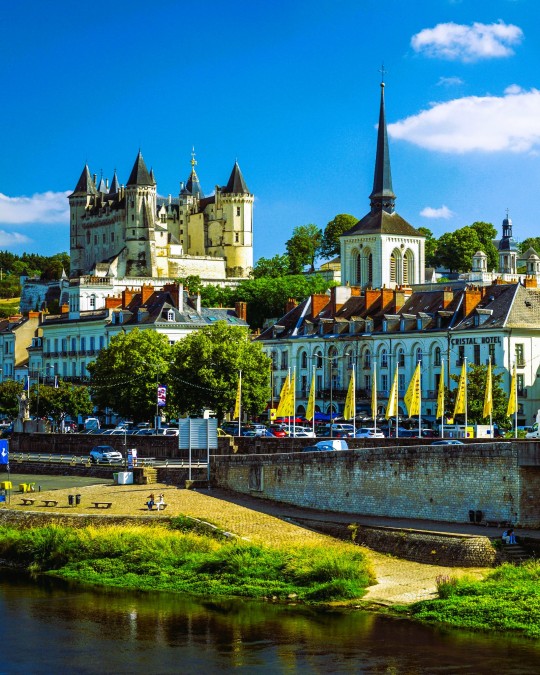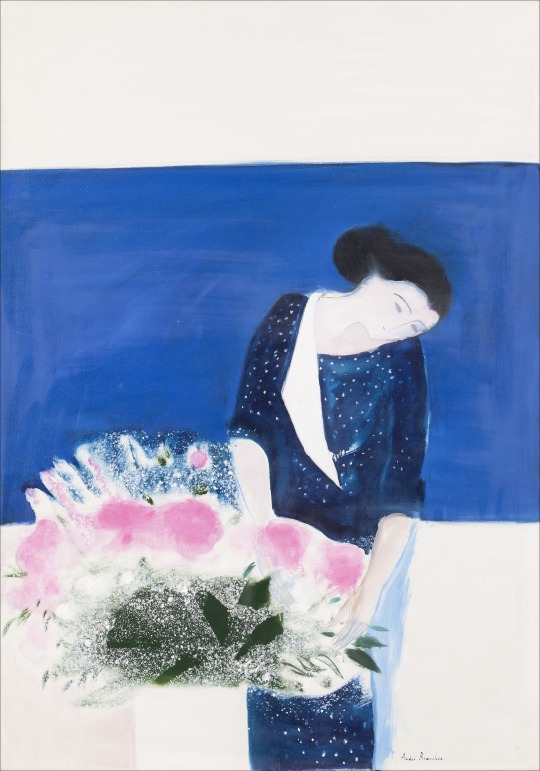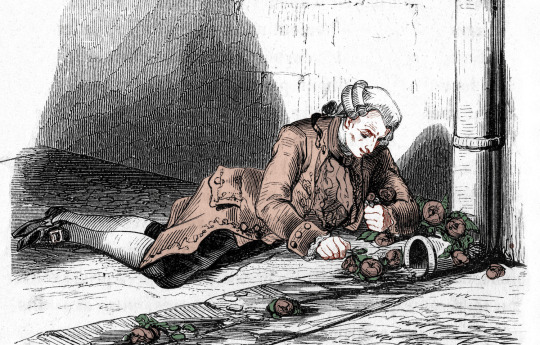#Château de Saumur
Explore tagged Tumblr posts
Text

Château de Saumur, France: The Château de Saumur, originally built as a castle and later developed as a château, is located in the French town of Saumur, in the Maine-et-Loire département. It was originally constructed in the 10th century by Theobald I, Count of Blois, as a fortified stronghold against Norman attacks. Wikipedia
122 notes
·
View notes
Text




Château de Saumur et la Loire
#old travel photos#i love french architecture#and i loved the loire valley#its was such a fun and beautiful place to visit#with amazing food wine and history!#Actually taken weeks before disaster#this was feburary 2020 lol#france#Château de Saumur#Loire#Loire vallye#Loire River#Castles#Châteaux#architecture#river#aesthetic#photography#my photos#my post#studyblr#study abroad#studying abroad
0 notes
Text

Série que la France est belle. Château de Saumur. été 2024. Dayoud.
27 notes
·
View notes
Photo

Le château de Saumur à l'arc-en-ciel
Raoul Dufy
1937
29 notes
·
View notes
Text

Château de Saumur, Maine-et-Loire
#photographie#photography#original photographers#photographers on tumblr#photografy#maine et loire#architecture#cityscape#france#aestethic#castle#saumur
1 note
·
View note
Photo

Andre Brasilier
https://archive.org/details/11155370Fullsize/rober.jpg
André Brasilier (1929 - )
André Brasilier was born into an artistic family in Saumur, France. His father, Jacques Brasilier, was closely affiliated with the Symbolist movement, joining the studio of the celebrated Alphonse Mucha. His mother, Alice Chaumont, was a graduate of the Royal College of Art in London. At the age of twenty, André Brasilier went to Paris to study at the École des Beaux-Arts. In 1952 he received a grant from the Florence Blumenthal Foundation, and in the following year, when he was only 23, won the Premier Grand Prix de Rome, entitling him to study at the Académie de France in Rome. His first solo exhibition of paintings, focusing on music, was held at the Galerie Drouet in 1959. Over the years Brasilier has exhibited in numerous exhibitions all over the world including France, Germany, Japan, Switzerland, Canada, the United States, Russia, The Netherlands, Korea and Hong Kong - over one hundred solo exhibitions in twenty different countries. His travels have inspired several series of paintings, as well as ceramics, mosaics, theatrical sets and book illustrations. He had his first retrospective of one hundred artworks from 1950 -1980 at the Château de Chenonceau in 1980, and a retrospective exhibition at the Musée Picasso - Château Grimaldi in Antibes, the French Riviera, in 1988.He has since been honoured with major retrospectives both at Russia’s renowned State Hermitage Museum in Saint Petersburg in 2005 and at the Museum Haus Ludwig für Kunstausstellungen Saarlouis in Germany in 2007. Across the globe and for the last five years, we’ve been the witnesses to a revival in the appreciation of Brasilier’s work.
20 notes
·
View notes
Photo

Chronology of the Marquis de Sade’s life from How to Read Sade by John Phillips, W. W. Norton (September 17, 2005), Pages 112-114.
1740 2 June: birth of Donatien Alphonse François de Sade, lord of La Coste, Saumane and Mazan in Provence. He was brought up in the palace of the Prince de Condé, who was four years older.
1746: Sent to live with his uncle, the abbé de Sade, at Saumane in Provence.
1750: Pursues his studies at the Jesuit college of Louis-le-Grand in Paris. The Jesuits infect him with a life-long enthusiasm for the theatre.
1755: Appointed sub-lieutenant in the King’s infantry regiment. In the course of active service in the Seven Years War is promoted to the rank of captain.
1763 17 May: marriage to Renée-Pélagie de Montreuil.
1763 October: briefly imprisoned at Vincennes for allegedly whipping Jeanne Testard, a fan-maker.
1765: Liaison with Mademoiselle de Beauvoisin, an actress.
1767: Death of his father, the comte de Sade, and birth of his first son, Louis-Marie.
1768: The Rose Kellar affair: imprisoned for six months initially at Saumur, then at Pierre-Encise near Lyons for alleged acts of libertinage, sacrilege and sadism on Easter Sunday in his house at Arcueil.
1769: Birth of his second son, Donatien-Claude-Armand.
1771: Birth of his daughter, Madeleine-Laure. Briefly imprisoned for debt.
1772 17 June: the Marseilles affair: Sade and his valet are found guilty of sodomy and attempted poisoning on the occasion of an orgy in Marseilles. Both flee to Italy, accompanied by Sade’s younger sister-in-law, Anne-Prospère. Sentenced to death in absentia, their effigies are burnt publicly at Aix.
1772 8 December: arrested and imprisoned at Miolans in Piedmont.
1773 1 May: escapes and eventually returns to La Coste. Sade’s mother-in-law, the Présidente de Montreuil, embittered by the seduction of Anne-Prospère, obtains a lettre de cachet for his arrest and imprisonment.
1775: Flees once again to Italy.
1777: Fresh scandals at La Coste, this time involving young girls employed at the château.
1778: The accusations of attempted poisoning having been dismissed, the death sentence imposed by the Aix parlement is lifted, but the Présidente uses her influence to obtain a new lettre de cachet. Sade escapes but is recaptured and returned to Vincennes. He will remain in prison until the Revolution.
1781: Writes the first of a succession of plays, The Inconstant.
1782: Writes the Dialogue Between a Priest and a Dying Man and begins The 120 Days of Sodom.
1784 29 February: transferred from Vincennes to the Bastille.
1786: Writes the greater part of his ‘philosophical’ novel Aline et Valcour.
1787: Composition of The Misfortunes of Virtue, the first novella-length version of Justine. Begins writing his collection of short stories, originally entitled Tales and Fabliaux of Eighteenth Century by a Provençal Troubadour, a selection of which will eventually be published in 1799 under the title The Crimes of Love.
1789 2 July: Sade incites the mob to riot from his cell window in the Bastille, telling them that prisoners are being murdered.
1789 4 July: sent to the insane asylum at Charenton, leaving behind a number of manuscripts, including The 120 Days of Sodom which he will never see again.
1789 14 July: the fall of the Bastille and the start of the Revolution.
1790 1 April: Sade is released following abolition of lettres de cachet by the new revolutionary government. Formal separation from Renée-Pélagie and start of a new relationship with Constance Quesnet, nicknamed ‘Sensitive’, which will last until his death. Actively involved in revolutionary politics, promoting hospital reform. Tries unsuccessfully to get his plays performed.
1791: Anonymous publication of Justine, or the Misfortunes of Virtue, the second version of the Justine narrative, and performance of his play The Comte d’Oxtiern, or the Effects of Libertinism.
1792: Composes various revolutionary essays, including The Idea on the Method for the Sanctioning of Laws.
1793: Publishes a pamphlet in honour of Marat following his murder by Charlotte Corday. When the opportunity presents itself, Sade, who has been appointed a judge in his revolutionary section, does not sentence his in-laws to death. Suspected of moderation and royalist sympathies, Sade is arrested in December.
1794: Sade escapes death owing to a bureaucratic error, and is eventually released at the end of the Terror, following the fall and execution of Robespierre.
1795: Penniless owing to the loss of his lands and property in the Revolution, Sade tries to stage more plays. Publishes Aline and Valcour, and, anonymously, Philosophy in the Boudoir.
1799: Anonymous publication of The New Justine, or the Misfortunes of Virtue, followed by The History of Juliette, her Sister, or the Prosperities of Vice, and publication in Sade’s own name of The Crimes of Love. Works as a prompt in a Versailles theatre for 40 sous a day.
1801: Sade arrested at his publishers in April for authorship of ‘obscene’ writings, and imprisoned at Sainte-Pélagie.
1803: Transferred to Bicêtre, then to Charenton.
1804: Sade’s continued detention justified by the invention of a new medical condition, ‘libertine dementia’.
1807: Confiscation of the libertine novel The Days at Florbelle, or Nature unveiled, begun in 1804. The manuscript will be destroyed at the behest of his younger son after his death.
1808: Organizes theatrical performances, using asylum inmates and professional actresses.
1812-13: Writes Adelaide of Brunswick, Princess of Saxony, The Secret History of Isabelle of Bavaria and The Marquis de Gange, all conventional historical novels.
1813-14: Affair with the sixteen-year-old laundry-maid Madeleine Leclerc.
1814 2 December: Sade’s death, followed by interment in the Charenton cemetery with full religious rites.
#the marquis de sade#western philosophy#chronology#biography#enlightenment#literature#French literature#French philosophy#libertinism#sadeian#sadean#how to read sade#John Phillips#Justine#Juliette#French Revolution#Scientific Revolution#France#18th century Philosophy#19th century Philosophy
9 notes
·
View notes
Photo

Château de Chaintres Vieilles Vignes - Saumur-Champigny 2019 - Bistrot de la Tranchée - Tours - 8 October 2022 (at Tours) https://www.instagram.com/p/CntON8grwRf/?igshid=NGJjMDIxMWI=
2 notes
·
View notes
Text
Sablé FC s'offre huit nouvelles recrues

Sablé FC amorce un tournant décisif avec l'intégration de huit nouveaux joueurs. Cette initiative, alignée avec une vision de développement ambitieuse, marque le début d'une ère nouvelle pour le club. Les supporters doivent s'attendre à voir évoluer divers talents, mêlant jeunesse et expérience, sur le terrain la saison prochaine. Sablé FC : un mercato avec huit nouveau joueurs Le mercato estival de Sablé FC a été particulièrement actif avec le recrutement de huit nouveaux joueurs. Le club a officialisé l'arrivée de Mohamed Faidhoine, Sidi Keita, Emmanuel Romain, Arthur Duval, Macéo Sow, Rayan Ebene, Julio Donisa et Landry Niaoré. Ces nouvelles recrues sont destinées à renforcer les différentes lignes de l'équipe et apporter une fraîcheur et une dynamique renouvelée. Lire aussi : Julien Sourice : nouvel entraineur de Sablé FC Un gardien d'expérience : Arthur Duval Arthur Duval, gardien de 25 ans, rejoint Sablé FC après des passages à Saumur FC et dans d'autres clubs. Sa carrière, ponctuée de défis physiques, témoigne de sa résilience et de sa détermination. Son intégration au sein de l'équipe devrait apporter une stabilité précieuse à la défense du club. Une défense solide avec Ryan Ebene Talla Ryan Ebene Talla, défenseur central de 24 ans, arrive avec une solide expérience acquise à Romorantin et d'autres équipes. Sa stature imposante et son sens du placement ont déjà impressionné les supporters lors de ses premiers entraînements. Sa présence est attendue pour solidifier l'arrière-garde de Sablé FC. Macéo Sow : Un jeune gardien prometteur À 22 ans, Macéo Sow a déjà un parcours très intéressant avec des passages dans diverses équipes, notamment à Feurs. Son arrivée à Sablé FC est perçue comme une opportunité de croissance tant pour le joueur que pour le club. Son agilité et sa réactivité seront des atouts précieux pour les matchs à venir. Le talent polyvalent d'Emmanuel Romain Emmanuel Romain, milieu offensif de 25 ans, a fait sensation la saison dernière à Château-Gontier en marquant 5 buts et en offrant 4 passes décisives. Sa polyvalence et sa capacité à créer des opportunités de jeu le positionnent comme un élément clé pour la prochaine saison. Il succède à deux anciens joueurs importants de Sablé FC en apportant une nouvelle dynamique au milieu de terrain. L'expérience offensive de Landry Niaoré Landry Niaoré, ailier de 29 ans, a été un adversaire redoutable pour Sablé FC lorsqu'il jouait pour Challans. Régulier en termes de buts et de passes décisives, son expérience et son sens du jeu offensif sont des atouts majeurs. Sa capacité à déstabiliser les défenses adverses sera un avantage non négligeable pour le club. La jeunesse et l'enthousiasme de Mohamed Faidhoine À seulement 19 ans, Mohamed Faidhoine est un jeune milieu offensif ayant déjà fait ses preuves en N3 avec le Stade Lavallois. Considéré comme une possible révélation pour la saison à venir, sa fougue et son enthousiasme devraient apporter une énergie nouvelle à l'équipe. Sidi Keita : Un attaquant talentueux Sidi Keita, attaquant de 22 ans, a montré un potentiel énorme à Château-Gontier malgré une blessure. Originaire du Mans, il possède une expérience variée qui lui permet de s'adapter rapidement à différents contextes de jeu. Sa présence sur le terrain devrait dynamiser l'attaque de Sablé FC. Le retour de Julio Donisa Julio Donisa, attaquant de 30 ans, revient sur les terrains après une pause. Ancien joueur de Deauville et du Mans FC, il est bien connu des amateurs de football local. Cherchant à retrouver le plaisir de jouer, son retour est attendu avec impatience par les supporters. Son expérience et sa motivation pourraient faire de lui un pilier de l'attaque de Sablé FC. Une stratégie de recrutement ambitieuse pour le Sablé FC L'ensemble de ces huit recrutements du Sablé FC s'inscrit dans une stratégie claire du club : combiner jeunesse et expérience pour répondre aux départs de certains joueurs et renforcer divers secteurs du jeu. Cette approche vise à construire une équipe équilibrée et compétitive, capable de relever les défis de la saison à venir. Alors que le mercato estival bat son plein, Sablé FC ne compte pas s'arrêter là. Des recrues supplémentaires sont attendues en août, ce qui promet de nouvelles surprises aux supporters. Cette dynamique de recrutement montre l'ambition du club de se hisser à un niveau supérieur et de viser des performances intéressantes. Voir également : Quels sont les avantages de jouer sur l'application 1Win ? Un avenir qui promet Avec ces nouvelles recrues, Sablé FC semble bien armé pour aborder la prochaine saison. Les supporters peuvent espérer des performances de haut niveau et une évolution positive du club. La combinaison de jeunes talents et de joueurs expérimentés pourrait bien être la clé du succès pour Sablé FC dans les mois à venir. L'engagement et la détermination des nouvelles recrues, alliés à une stratégie de recrutement bien pensée, augurent un avenir prometteur pour le club. Read the full article
0 notes
Text

The Château de Saumur was built around the 10th century but was short-lived (Loire Valley France). The castle was burnt down and then rebuilt with extra reinforcements (Loire Valley France). King Rene lived in the château for a time, on and off (Château de Saumur). Many famous governors have lived in the château over the centuries. Some of the governors built up the fortifications as they lived there. After being a residence for centuries, it became a prison (Château de Saumur). The main prisoners were British sailors around the 17th and 18th centuries (Château de Saumur). The French revolution had no real impact on the structure but it still was not in good shape (Château de Saumur). It was planned to be demolished but Napoleon made it into a state prison (Château de Saumur). In 1814 it was changed from a state prison into a storage unit for war weapons and munitions (Château de Saumur). Around 1889 the soldiers abandoned the château and the government decided to turn it into a museum (Château de Saumur). The government bought it in 1906 and changes to the structure were made very suddenly (Château de Saumur). As the museum grew, parts of the château that had broken down had to be restored to fit more pieces (Château de Saumur). Unfortunately, in 1940 a bomb hit the château but thankfully it was able to be repaired after a couple of years (Château de Saumur). In 2001 more of the building began to crumble but rebuilding began shortly in 2004 (Château de Saumur). Occasional rebuilding is maintained by the government to keep the building in good condition (Château de Saumur). People can still visit this museum that is rich in history. A courtyard has been added surrounding parts of the museum. Also on the property is a well that spans over 30 meters deep (Loire Valley France).

0 notes
Text
Chypre : un paradis méconnu à découvrir d'urgence!

Ah, le voyage à Chypre! Cette petite île de la Méditerranée, dont la richesse culturelle et la beauté naturelle n'ont d'égal que sa cuisine succulente. Alors, si vous cherchez un lieu paradisiaque pour vous évader, vous êtes au bon endroit. Suivez le guide! Paphos : à la croisée des civilisations Premier arrêt de notre voyage à Chypre, Paphos, classée au patrimoine mondial de l'UNESCO. N'oubliez pas de visiter les célèbres Tombeaux des Rois, le Château de Paphos et la Maison de Dionysos. Le soir, dégustez un mezze traditionnel sur le port, en admirant le coucher du soleil. La mosaïque de la maison de Dionysos Parmi les joyaux de Paphos, la Maison de Dionysos est un incontournable. Les mosaïques de cette villa romaine vous transporteront dans la mythologie grecque, dans un cadre tout simplement paradisiaque. Larnaca : entre plages et histoire Prochaine étape, Larnaca! Profitez de ses plages de sable fin, puis flânez dans son centre historique. Ne manquez pas l'église de Saint-Lazare et le fort de Larnaca, symboles de la riche histoire de la ville. Le lac salé de Larnaca L'un des sites les plus emblématiques de Larnaca est son lac salé, véritable havre de paix. En hiver, il devient le lieu paradisiaque d'une migration de flamants roses. Un spectacle à couper le souffle! A lire également : Un bijou caché en France : le village troglodyte de Saumur Nicosie : un mélange unique de cultures Dernière étape de notre voyage à Chypre, Nicosie. Ville divisée, elle offre une expérience culturelle unique. Visitez le musée archéologique, flânez dans la vieille ville et admirez les remparts vénitiens. La nuit, découvrez les bars et restaurants animés de Ledra Street. La traversée de la Ligne Verte La ligne verte, qui divise Nicosie, est une expérience à ne pas manquer. Traversez-la pour découvrir la partie turque de la ville et admirer une autre facette de ce lieu paradisiaque. Voilà, chères lectrices, un aperçu de ce qui vous attend lors de votre voyage à Chypre. De la richesse de son patrimoine à la beauté de ses paysages, en passant par l'accueil chaleureux de ses habitants, Chypre a tout pour séduire. Alors, êtes-vous prêtes à vous envoler vers ce petit coin de paradis? Un conseil: ne tardez pas, Chypre vous attend! Read the full article
0 notes
Photo
ohohcherie:
Château de Saumur (by perlmic)

323 notes
·
View notes
Text

An early 15th century calendar illustration for the month of September shows the castle of Duc de Berry at Saumur in France. By the late Middle Ages, the simple castles of earlier centuries had given way to vast, elaborate fortresses. The castle provided a gracious home in time of peace, its soaring towers and gilded weather vanes giving it a fairy-tale appearance. In time of war, the castle was a secure base; after crossing the drawbridge, attackers would still face a hail of stones and boiling lead dropped through 'murder holes' beneath the battlements of the towers.
Source: Unknown.
ADD LINK TO PREVIOUS POST ABOUT THE ILLUSTRATORS, THE LIMBURG BROTHERS.
Fact-check the following:
The Château de Saumur was originally built as a castle in the 10th century by Theobald I, Count of Blois, as a fortified stronghold against Norman attacks. It overlooks the confluence of the Loire and the Thouet. In 1026 it came into the hands of Fulk Nerra, count of Anjou, who bequeathed it to his Plantagenet heirs. Following its destruction in 1067, the castle was rebuilt by Henry II of England in the later 12th century. In the early part of the 13th century, Philip II of France made Saumur part of his royal domain. The page for September in the 'Tres Riches Heures du Duc de Berry' depicts the Château as it looked in 1410.
Below: Château de Saumur as it is today.

0 notes
Text

Pour un séjour aux confins de l’Anjou, de la Touraine et du Poitou !
A MONTREUIL-BELLAY dans Le MAINE ET LOIRE, La Maison d'Hôtes de Charme "L'ARCANE DU BELLAY" vous accueille dans une ancienne dépendance du presbytère Sainte-Catherine est située sur les bords du Thouet et vous offre une vue imprenable sur le château de ce village. Vous serez hébergés dans 2 chambres d'hôtes de charme et une grande suite familiale. A DECOUVRIR SANS ATTENDRE SUR http://www.trouverunechambredhote.com/fiche.php?aid=448
#SAUMUR#VALDELOIRE#CHARME#EVASION#SEJOURS#HEBERGEMENTS#CHAMBRESDHOTES
0 notes
Text
2 notes
·
View notes
